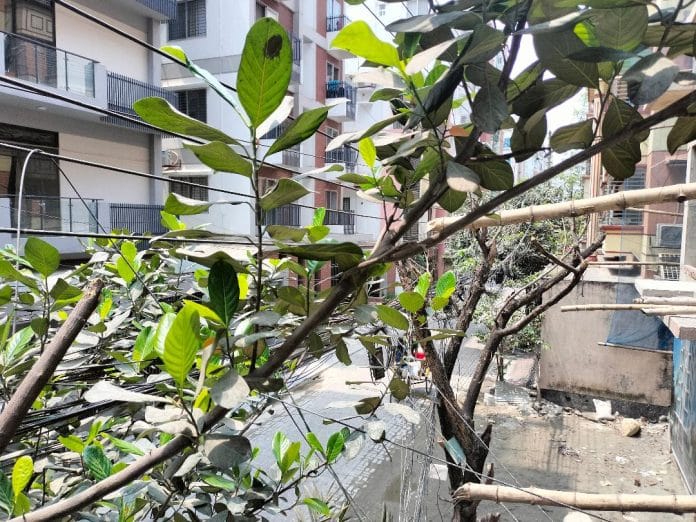The air quality in Dhaka saw a temporary improvement during the Eid-ul-Fitr holidays, as observed in a study by the Center for Atmospheric Pollution Studies (CAPS).
However, pollution levels remained within the “Unhealthy” category, reflecting persistent environmental concerns.
According to the report, the five-day average Air Quality Index (AQI) during Eid in 2025 stood at 151. While this marks an improvement from 2024’s record-high AQI of 190, it remains significantly above the safe limit.
Over the past decade, Dhaka’s Eid-time AQI has fluctuated, with the lowest recorded average of 67 in 2016.
The data shows that Dhaka’s air quality rarely falls within the “Good” category (AQI 0-50), with only three days in the past decade recording such low pollution levels. Conversely, the city has seen multiple instances of AQI surpassing 150, making the air unhealthy for the general population.
The study examined AQI fluctuations before, during, and after Eid, showing that pollution levels typically decrease as residents leave Dhaka for their hometowns.
This year, the AQI was highest on March 29 (155) before gradually declining to 144 by April 2. The improvement was largely attributed to the reduced number of vehicles on the road and the temporary shutdown of industries, construction sites, and brick kilns.
The highest recorded AQI in the pre-Eid period was on March 26 (200), a day marked by national events and increased human activity.
A location-wise analysis revealed significant differences in pollution levels across various parts of Dhaka. Mirpur Eastern Housing recorded the highest AQI on March 26 at 230, followed by Lalbagh at 229. Areas such as Gulshan-1, Gulshan-2, and Tejgaon also had persistently high AQI levels.
By April 2, the air quality improved in most areas, but pollution remained unhealthy for sensitive groups, especially in high-traffic and industrial zones.
CAPS chairman Dr Ahmad Kamruzzaman Majumder warn that despite the temporary decline in pollution during Eid, Dhaka’s air quality remains a serious health concern.
The findings emphasize the need for long-term measures such as stricter emissions control, better public transportation infrastructure, and increased green spaces to combat the city’s chronic air pollution.
The study’s data was sourced from Air Now and compiled by CAPS, covering a ten-year period from 2016 to 2025.

